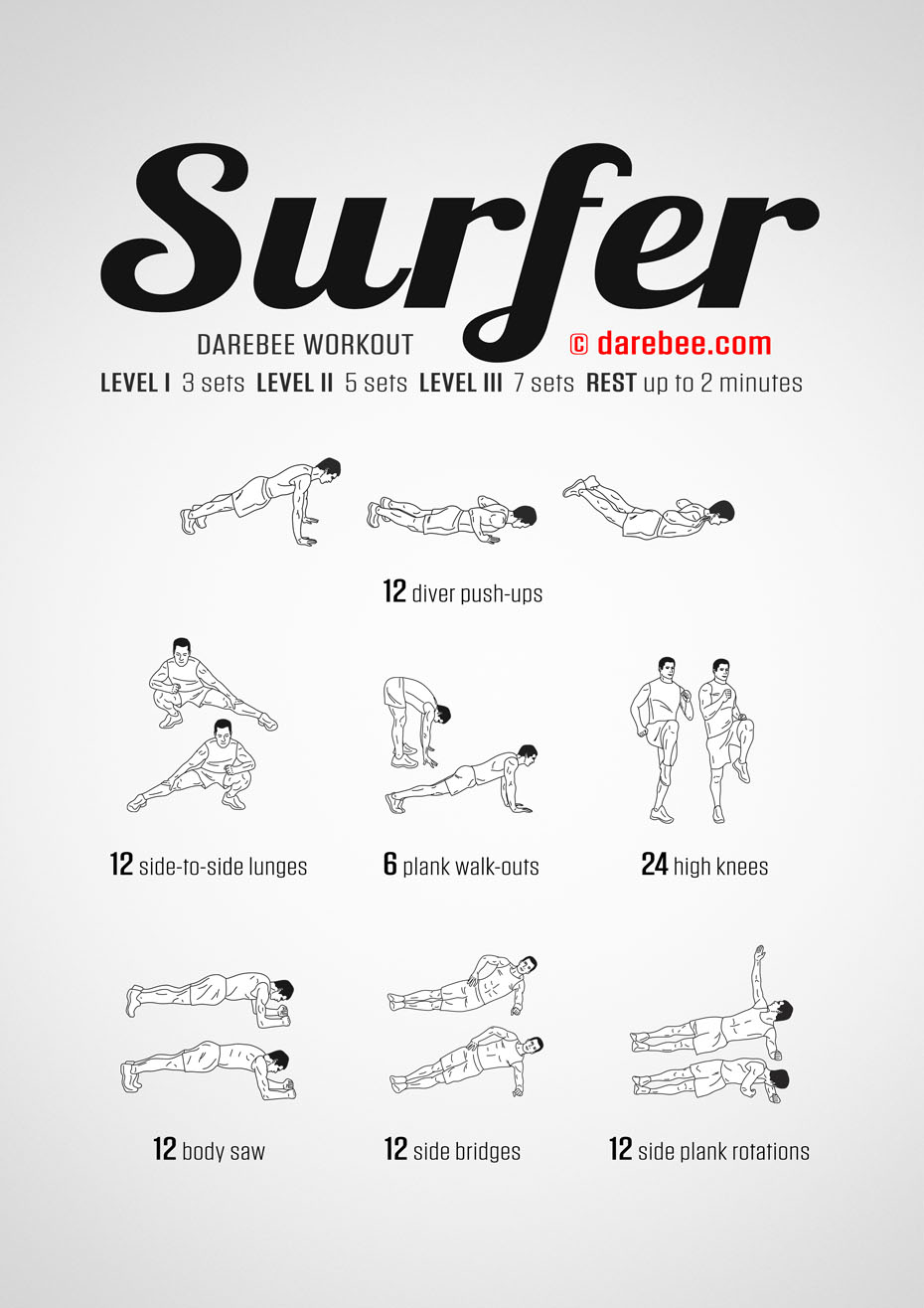
The Ultimate Surfing Training Plan: From Beginner to Advanced
Surfing, a seemingly effortless dance on the waves, demands a surprising level of physical and mental fitness. Mastering this exhilarating sport isn’t just about catching waves; it requires strength, endurance, balance, flexibility, and mental resilience. This comprehensive training plan outlines a structured approach, catering to surfers of all levels, from complete beginners to seasoned veterans looking to refine their skills.
I. Assessing Your Current Fitness Level:
Before diving into the training plan, it’s crucial to honestly assess your current physical fitness. This self-assessment will guide the intensity and progression of your training. Consider these key areas:
- Cardiovascular Fitness: Can you comfortably run for 30 minutes? How is your stamina during strenuous activities?
- Strength: How strong are your arms, legs, and core? Can you perform basic bodyweight exercises like push-ups, squats, and planks?
- Flexibility and Balance: How flexible are your hips, shoulders, and hamstrings? Can you stand on one leg comfortably for 30 seconds?
- Surfing Experience: Are you a complete beginner, intermediate, or advanced surfer? Your current skill level will significantly influence the focus of your training.
II. The Training Plan: A Holistic Approach
This training plan encompasses four key components: cardiovascular training, strength training, flexibility and balance exercises, and specific surfing drills. The intensity and duration of each component should be adjusted based on your individual fitness level and goals.
A. Cardiovascular Training (2-3 times per week):
Surfing demands significant cardiovascular endurance. The ocean is a constantly changing environment, requiring bursts of energy to paddle, pop up, and maneuver on the wave.
- Beginners: Start with 30 minutes of low-impact cardio, such as cycling or brisk walking, gradually increasing the duration and intensity over time.
- Intermediate: Incorporate interval training, alternating between high-intensity periods (e.g., sprints) and low-intensity recovery periods (e.g., jogging). Consider swimming, as it directly mimics the paddling aspect of surfing.
- Advanced: Engage in high-intensity interval training (HIIT) sessions, incorporating activities like running, swimming, or cycling at maximal effort for short intervals followed by brief recovery periods. Include longer endurance runs or swims to build stamina.
B. Strength Training (2-3 times per week):
Strength training is essential for paddling power, popping up quickly, and maintaining balance on the board. Focus on compound exercises that work multiple muscle groups simultaneously.
- Beginners: Start with bodyweight exercises such as squats, push-ups, lunges, planks, and rows. Aim for 2-3 sets of 10-12 repetitions for each exercise.
- Intermediate: Incorporate resistance bands or light weights to increase the challenge. Include exercises like deadlifts, overhead presses, and bench presses. Focus on proper form to avoid injuries.
- Advanced: Increase the weight or resistance, aiming for lower repetitions (6-8) with higher intensity. Consider incorporating plyometrics (jump training) to improve explosive power. Focus on exercises that mimic the surfing motion, such as pull-ups for paddling and explosive jumps for popping up.
C. Flexibility and Balance Training (2-3 times per week):
Flexibility and balance are critical for maintaining control and preventing injuries. Yoga, Pilates, and specific stretching exercises are highly beneficial.
- Beginners: Focus on basic stretches, holding each stretch for 30 seconds. Include stretches for the hamstrings, quads, hips, shoulders, and back. Practice balancing exercises like single-leg stands and tree pose.
- Intermediate: Incorporate more advanced yoga poses and Pilates exercises. Improve balance by standing on an unstable surface (e.g., balance board) or closing your eyes while balancing on one leg.
- Advanced: Focus on dynamic stretching, incorporating movements that mimic surfing motions. Increase the difficulty of balance exercises, such as practicing on a wobble board or incorporating arm movements while balancing.
D. Surfing-Specific Drills (1-2 times per week):
Practice makes perfect. Regular time in the water is crucial for improving your surfing skills.
- Beginners: Focus on paddling technique, popping up quickly, and maintaining balance on the board in calm water. Practice paddling against resistance (e.g., a resistance band).
- Intermediate: Work on wave selection, turning techniques, and bottom turns. Practice riding different types of waves and maneuvering in varying conditions.
- Advanced: Refine advanced maneuvers such as cutbacks, aerials, and critical sections. Focus on improving your wave reading skills and adapting to challenging conditions.
III. Nutrition and Hydration:
Fueling your body correctly is essential for optimal performance. Maintain a balanced diet rich in carbohydrates for energy, protein for muscle repair, and healthy fats for hormone production. Stay hydrated by drinking plenty of water throughout the day, especially before, during, and after your training sessions.
IV. Rest and Recovery:
Adequate rest is crucial for muscle recovery and injury prevention. Allow your body sufficient time to recover between training sessions. Prioritize sleep, aiming for 7-9 hours of quality sleep per night. Incorporate active recovery methods like light stretching or yoga on rest days.
V. Progression and Monitoring:
This training plan is a guide; adjust it based on your progress and listen to your body. Gradually increase the intensity and duration of your workouts over time. Monitor your progress by tracking your workout data and noting any improvements in your surfing performance. Don’t hesitate to consult a physical therapist or certified personal trainer for personalized guidance.
VI. Mental Preparation:
Surfing is as much a mental game as a physical one. Develop mental resilience by practicing mindfulness, visualization, and positive self-talk. Learn to manage stress and maintain focus, even during challenging conditions. Regular meditation or deep breathing exercises can significantly enhance your mental fortitude.
By following this comprehensive surfing training plan, combining physical training with mental preparation, and consistently practicing in the water, you’ll be well on your way to mastering the art of surfing and achieving your personal best. Remember to listen to your body, prioritize safety, and enjoy the ride!



